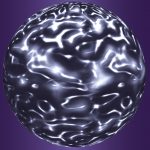Lien vers Pubmed [PMID] – 20305637
Nature 2010 Apr;464(7290):864-9
When internalized receptors and other cargo are destined for lysosomal degradation, they are ubiquitinated and sorted by the endosomal sorting complex required for transport (ESCRT) complexes 0, I, II and III into multivesicular bodies. Multivesicular bodies are formed when cargo-rich patches of the limiting membrane of endosomes bud inwards by an unknown mechanism and are then cleaved to yield cargo-bearing intralumenal vesicles. The biogenesis of multivesicular bodies was reconstituted and visualized using giant unilamellar vesicles, fluorescent ESCRT-0, -I, -II and -III complexes, and a membrane-tethered fluorescent ubiquitin fusion as a model cargo. Here we show that ESCRT-0 forms domains of clustered cargo but does not deform membranes. ESCRT-I and ESCRT-II in combination deform the membrane into buds, in which cargo is confined. ESCRT-I and ESCRT-II localize to the bud necks, and recruit ESCRT-0-ubiquitin domains to the buds. ESCRT-III subunits localize to the bud neck and efficiently cleave the buds to form intralumenal vesicles. Intralumenal vesicles produced in this reaction contain the model cargo but are devoid of ESCRTs. The observations explain how the ESCRTs direct membrane budding and scission from the cytoplasmic side of the bud without being consumed in the reaction.

